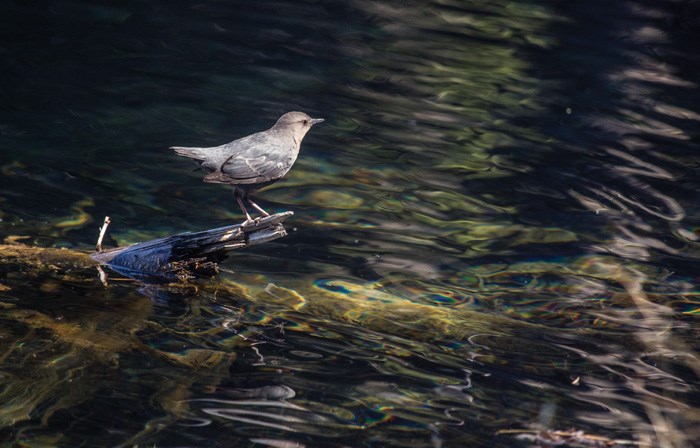BANFF – The annual Christmas Bird Count was held on Dec. 17, and despite strong winds, blowing snow and a severe wind chill, it was a successful affair.
A total of 82 participants counted 44 different species and 2,090 individual birds between Banff and Canmore. In all, the participants spent 110 collective hours in the field, covering 328 kilometres, including 227 kilometres on foot, to do the count.
“It was amazing. It was a very cold, snowy, blowy day,” said Heath Dempsey, coordinator of the Banff-Canmore Christmas Bird Count. “The wind is usually the worst thing you can get on a bird count because no one wants to be out in the wind.”
While the participant numbers didn’t approach last year’s record of over 100 people, Dempsey was still very happy with how things went.
“Given it is Christmas time and a lot of our regulars couldn’t make it, we thought it would be a low participant count,” Dempsey said. “We had new people coming out, people who were experienced, and that was really gratifying.”
This year, few waterfowl and raptors were seen. The most commonly seen bird was the mallard duck, with 282 counted, followed by the mountain chickadee at 273 and the common raven with 224 counted. There were also 202 house sparrows counted.
“We got more species than anyone expected,” Dempsey said. “We thought we were going to be one of the lowest counts. We did one more species than last year, so higher than average.”
Other species were a bit more rare to see on count day. Only two American crows and Canada geese were seen. Only one great horned owl was counted, along with only one American robin and one European starling.
Christmas Bird Count events are not just done locally, but across North America and into the Caribbean and Central America. In many places, it has been going on for a century but has changed over the years.
“Hunters used to go out and shoot birds on Christmas Day,” Dempsey said. “It has changed to a conservation message to get a snapshot from around North America of where the birds are, and are there any trends to flag.”
There was anticipation of counting more species of small birds, especially finches, due to the large cones on the spruce trees in the Bow Valley this year. Unfortunately, only small numbers were found.
“One thing that was really interesting this year is there are a lot of cones on spruce trees, so we anticipated more seed eaters,” Dempsey said. “They have been around but not in the big amount that we were expecting.”
One of the biggest drops seen among bird species was with the Bohemian waxwing. In 2018, 1,769 were counted thanks to an abundance of mountain ash berries that year. This year, only 32 were counted.
“It is all volunteers going out and that is gratifying because with our information, we can see how many birds we get compared to previous years and what factors contributed to that," said Dempsey.
Signs of other wildlife were seen by count participants, including old cougar and grizzly bear tracks near the Minnewanka Loop, and the usual number of squirrels, elk and deer.
The next Christmas count will be held on Dec. 16, 2023.
“It is done within a two-week window of Christmas, so we are always on the Saturday before Christmas,” Dempsey said. “It is a busy time of year and a cold time of year.”




